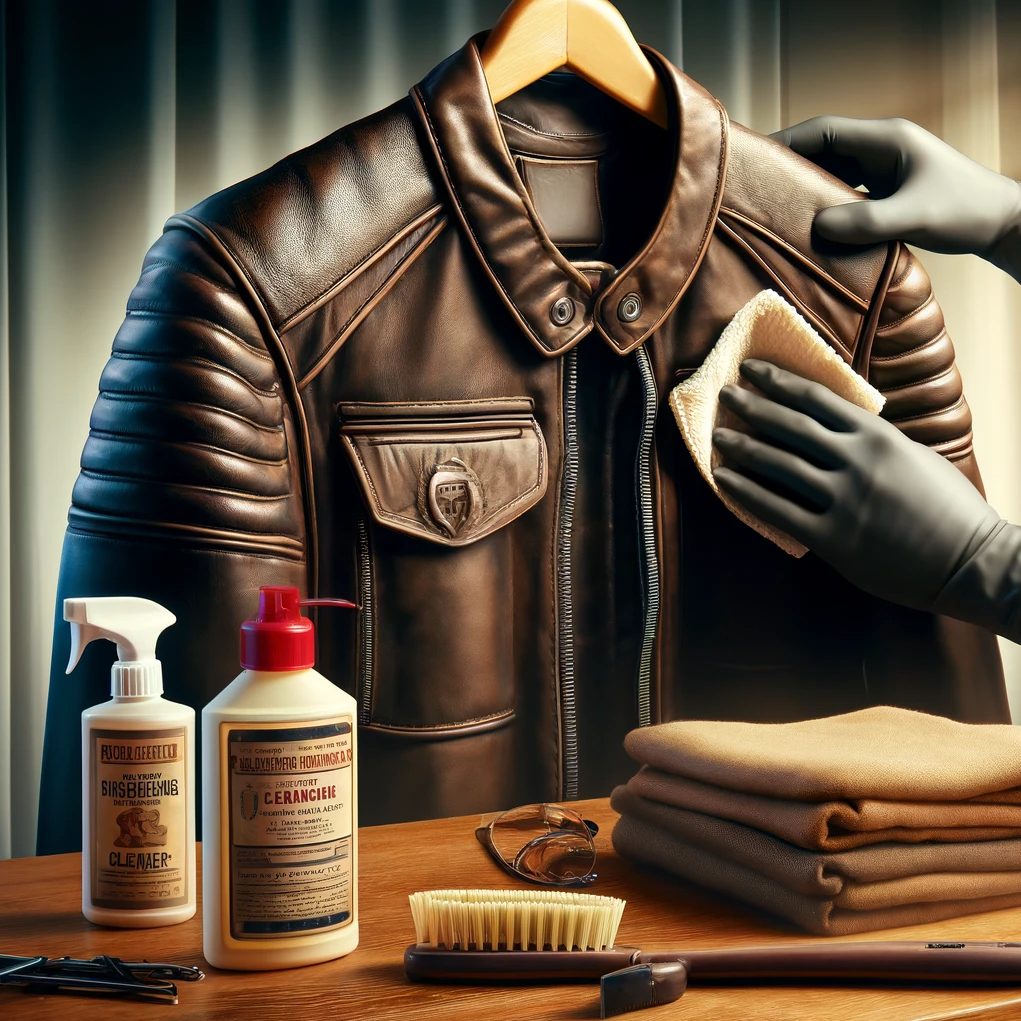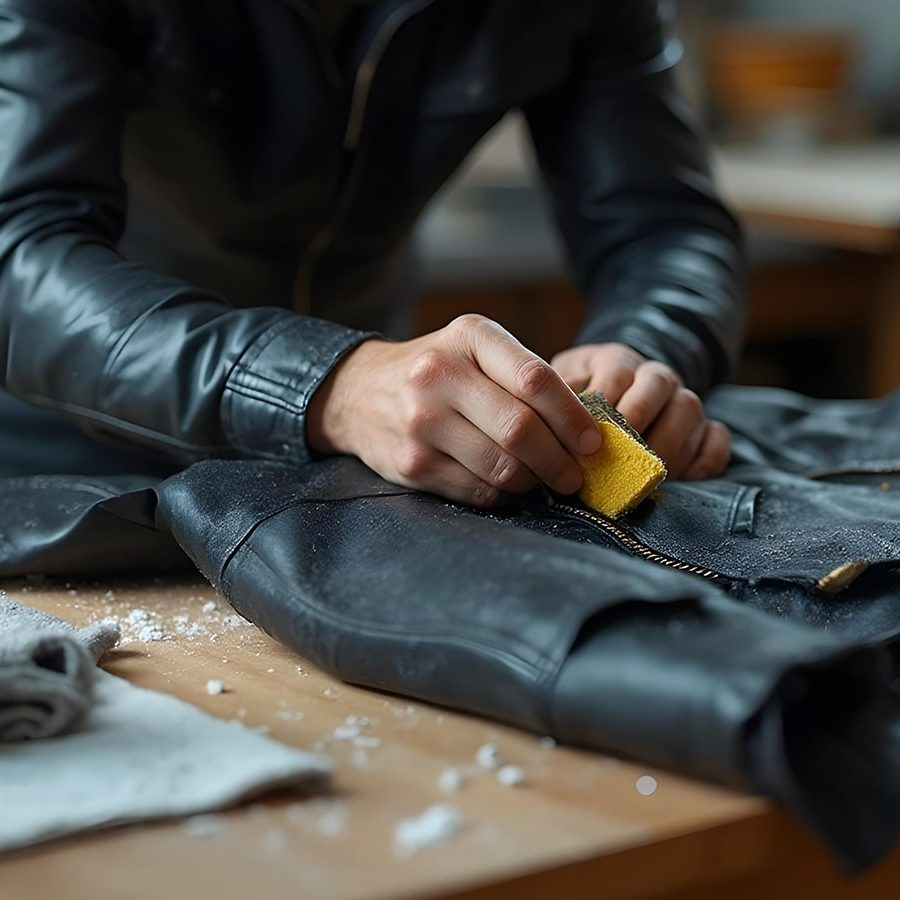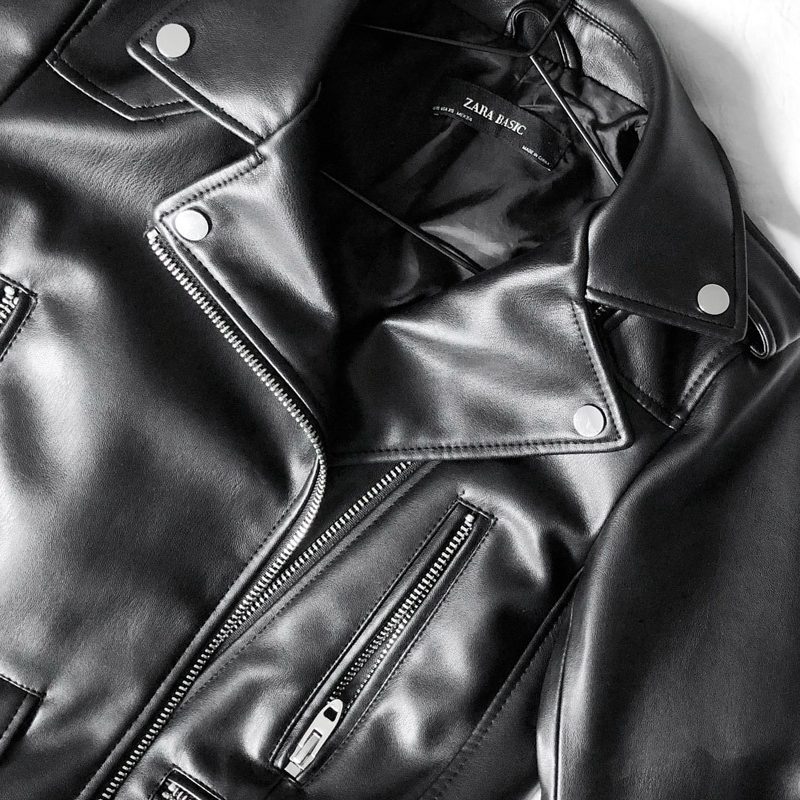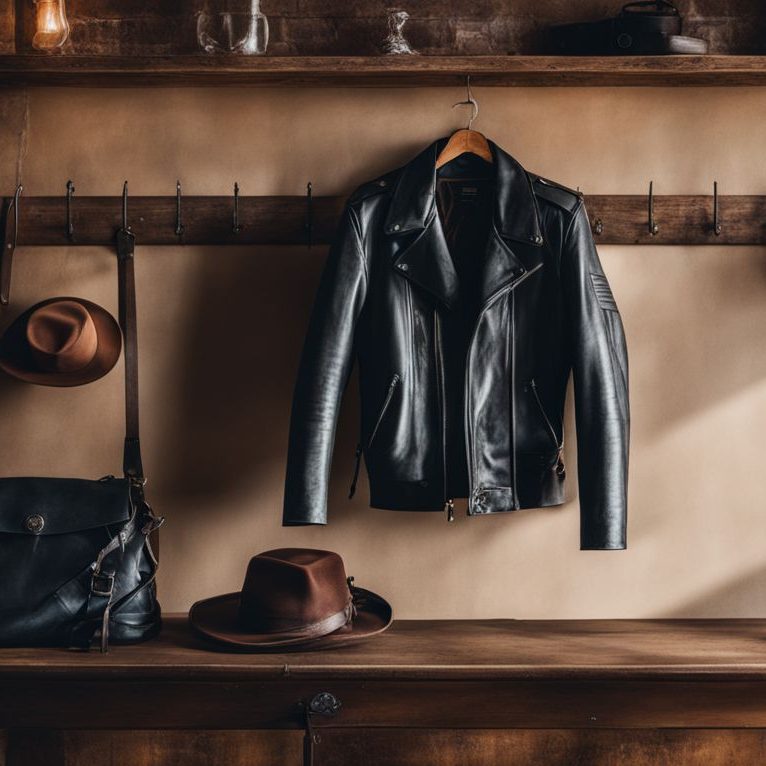Introduction to Leather Jacket Care
Leather jackets are timeless pieces of clothing that can elevate any outfit. They exude style and sophistication and serve as durable outerwear for various occasions. However, like any fashion item, leather jackets require proper care to maintain their appearance and longevity. Cleaning a leather jacket is not as straightforward as tossing it in the washing machine. It requires special techniques and products to prevent damage while ensuring the leather remains supple and beautiful.
This article aims to provide a comprehensive guide on how to clean a leather jacket effectively. We will cover essential tips for regular maintenance, deep cleaning methods, and stain removal techniques. Additionally, we will discuss leather conditioning and protective treatments that can enhance the jacket’s appearance and durability. By following this guide, leather jacket owners can keep their beloved garments looking fresh and stylish for years to come.

Understanding Leather Types
Different Types of Leather
Before cleaning a leather jacket, it is essential to understand the type of leather it is made from. There are several types of leather, each with unique characteristics and cleaning requirements. The most common types used in jackets include full-grain leather, top-grain leather, and bonded leather.
Full-grain leather is the highest quality and retains the natural grain and texture of the hide. It is durable and develops a beautiful patina over time. Top-grain leather undergoes more processing, making it slightly less durable but easier to clean. Bonded leather, made from scraps and fibers, is the least expensive and of lower quality. Understanding the type of leather will help determine the appropriate cleaning method and products to use.
Identifying Your Leather
To identify the leather type, examine its texture and look for any labeling or tags. Full-grain leather has a natural texture with visible imperfections, while top-grain leather is more uniform and smooth. Bonded leather often has a synthetic look and may feel less substantial. Knowing the leather type will guide you in choosing the right cleaning products and techniques, ensuring you preserve the quality and appearance of your jacket.

Regular Maintenance Practices
Routine Cleaning
Regular upkeep is key to maintaining the appearance and longevity of a leather jacket. Routine cleaning helps remove dirt, dust, and oils that accumulate over time. A soft, dry cloth should be used to wipe down the jacket every few weeks. This simple practice can prevent grime from building up and keeps the leather looking fresh.
For more thorough routine cleaning, consider using a slightly damp cloth and mild soap. Test a small, inconspicuous area first to ensure the cleaning solution does not affect the leather. Gently wipe the jacket’s surface and avoid soaking it. Afterward, dry the jacket with a clean cloth to prevent any moisture from penetrating the leather. Regular maintenance will significantly reduce the need for deep cleaning in the future.
Proper Storage
Proper storage is equally important in maintaining a leather jacket’s condition. When not in use, it should be hung on a wide, padded hanger to preserve its shape. Avoid using wire hangers, which can cause the leather to stretch or become misshapen. Additionally, keep the jacket in a cool, dry place, away from direct sunlight. Prolonged exposure to sunlight can lead to fading and drying out of the leather.
If storing for an extended period, consider covering the jacket with a breathable fabric garment bag. Avoid plastic covers, as they can trap moisture and lead to mildew. By following these storage practices, you can prolong your leather jacket’s life and keep it looking great for years.

Deep Cleaning Techniques
Preparing for Deep Cleaning
When your leather jacket requires deep cleaning, preparation is crucial. Before beginning the process, gather all necessary supplies. You will need a soft cloth, mild soap or leather cleaner, a soft brush, and a leather conditioner. Testing the cleaning products on a hidden area of the jacket is an excellent first step to ensure they do not cause discoloration or damage.
It is also wise to read any care labels present on the jacket. These labels may offer specific cleaning instructions best suited for the leather type. Ensuring the jacket is free from any loose items, such as keys or tissues, is essential before cleaning. Following these preparatory steps will make the deep cleaning process more effective and straightforward.
Deep Cleaning Steps
To begin deep cleaning, mix a small amount of mild soap with lukewarm water in a bowl. Dip a soft cloth into the solution and wring it out, ensuring it is damp but not soaked. Begin wiping the jacket gently, working in small sections. Pay attention to areas that may have accumulated more dirt and grime, such as sleeves and cuffs.
Once you’ve cleaned the entire jacket, use a separate damp cloth with plain water to remove any soap residue. Be careful not to saturate the leather, as excess moisture can cause damage. After cleaning, let the jacket air dry in a well-ventilated area, away from direct sunlight or heat sources. This drying process is crucial to prevent leather from becoming stiff or cracked.

Stain Removal Techniques
Identifying the Type of Stain
Stains can happen to anyone, and knowing how to treat them effectively is crucial for maintaining your leather jacket’s appearance. The first step in stain removal is identifying the type of stain. Common stains include grease, ink, water, and food spills. Different stains require different approaches for successful removal.
For example, grease stains should be treated promptly with a dry cloth to absorb as much of the oil as possible. Waiting too long can make the stain set, making it harder to remove. Ink stains, on the other hand, may require a specific leather cleaner or rubbing alcohol, as they can penetrate the leather. Identifying the stain type will help you choose the best treatment method.
Techniques for Stain Removal
To address a grease stain, sprinkle cornstarch or talcum powder on the affected area and let it sit for several hours. This helps absorb the grease. Afterward, gently brush off the powder with a soft brush. For ink stains, dab the area with a cotton ball soaked in rubbing alcohol. It’s essential to blot, not rub, as this can spread the ink further. After treating the stain, clean the area with a damp cloth and let it air dry.
For water stains, using a damp cloth to gently blot the area can help. Afterward, allow the leather to dry naturally. Avoid using heat sources, as they can damage the leather. If the stain persists, consider consulting a professional leather cleaner to ensure it is treated properly without damaging the material.
Conditioning and Protecting the Leather
The Importance of Conditioning
Once your leather jacket is clean, conditioning is a crucial next step. Conditioning helps restore the natural oils that can be stripped away during the cleaning process. This is important, as leather can become dry over time, leading to cracks and a dull appearance. Regular conditioning will keep your leather jacket soft, supple, and looking its best.
When choosing a leather conditioner, opt for a product specifically designed for your type of leather. Apply the conditioner according to the manufacturer’s instructions, typically using a clean, soft cloth to apply a thin layer. Conditioning should be done every three to six months, depending on the climate and usage. In harsher conditions, more frequent conditioning may be necessary.
Protective Treatments
In addition to regular conditioning, consider using a protective treatment on your jacket. Water repellents and leather protectors can help shield your jacket from moisture, stains, and dirt. These products create a barrier that makes it easier to clean the leather and prevents damage from spills or weather conditions.
Before applying any protective treatment, ensure the jacket is thoroughly cleaned and conditioned. Test a small area first to ensure compatibility and effectiveness. After applying the treatment, allow the jacket to dry completely before wearing it. This added layer of protection will significantly extend the life of your leather jacket.
Conclusion: Caring for Your Leather Jacket
In conclusion, cleaning and maintaining a leather jacket requires specific techniques and knowledge. Understanding your jacket’s leather type is the first step in selecting appropriate cleaning methods. Regular maintenance, including routine cleaning and proper storage, is crucial for keeping the jacket in good condition.
When deep cleaning or removing stains, the right preparation and techniques help avoid damaging the leather. Conditioning and protective treatments further enhance the leather’s longevity, ensuring it remains soft and stylish. By following these guidelines, leather jacket owners can enjoy their jackets for years, preserving their beauty and functionality.
Investing time and care into cleaning your leather jacket will not only improve its appearance but also reflect your appreciation for a high-quality garment. With proper care, your leather jacket can become a cherished part of your wardrobe, ready to withstand the test of time and trends alike.


